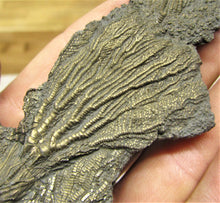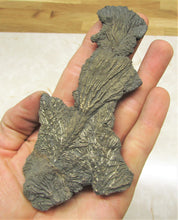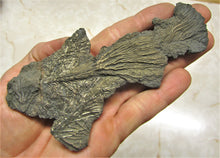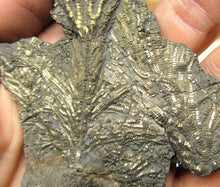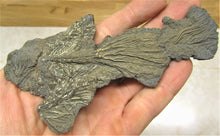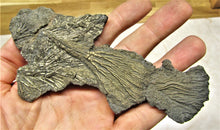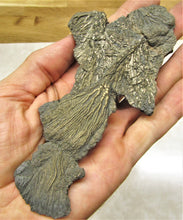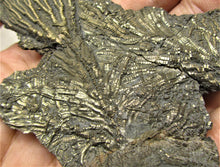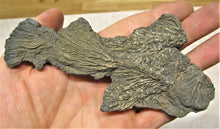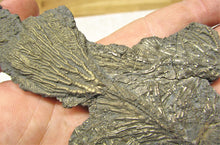
A stunning and rare example of a crinoid fossil of the species Pentacrinites fossilis from the world-famous Jurassic Coast beach of Charmouth, Dorset UK.
The fossil measures 148 mm (5.4 inches) across, which is large for a crinoid fossil, and contains three crinoids preserved lying on top of one another. There are two complete animals, with one displaying the full stem with attachment cirri and head with a complete crown of arms and pinnules. The second is preserved underneath the top individual and a third much smaller crinoid is sitting at the bottom of the piece with a complete head exposed. It has a thin layer of pyrite on the surface which gives the fossil a wonderful golden colour and shine. The reverse side has been coated in a waterproof plaster to make it strong and stable. Finding a crinoid fossil from this location with this many individuals as well-preserved as this is very hard nowadays, and these beautiful examples don't come up for sale very often. A rare opportunity to own a very sought after and uncommon fossil from this iconic location.
Around 196 million years old (Sinemurian, Early Jurassic), this fossil would make a wonderful addition to any collection.
Crinoids are echinoderms closely related to starfish and sea urchins, and have been around for many hundreds of millions of years. They still live today in the deep seas around the world.













